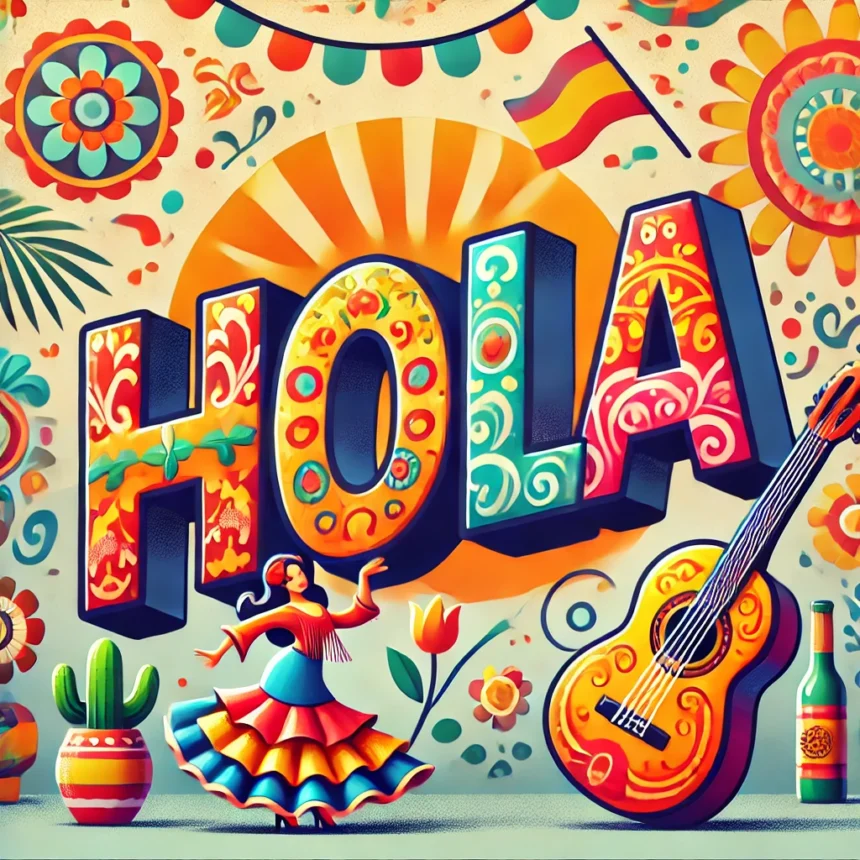Introduction
One of the first things you learn when you master Hi in Spanish is saying “hi” and, therefore, connecting better with tongue-greet people. “hola” is the most common form of greeting in Spanish. Still, there are many more you can use depending on both the context and the country in which you live. This article will touch on the various salutatory expressions of hi in Spanish, engage with how they help shape the greeting-particular culture within our example language, and cough out even handier advice so that your mouth won’t find it hard to utter sweet espresso-Spanish-speak.
The History and Origin of “Hola”
But here’s the deal about that phrase: hello has an exciting history, and so does the word “hola.” This greeting comes from the Old Hi in Spanish word “ola,” or wave. This evolution mirrors the significance of maritime culture in Spain, where waving was a common practice among sailmen and folk in coastal dwellings. Over the years, “hola” became a spoken greeting throughout Spain and Latin America.
How to Say Hi in Spanish
Hola
Hola is the most common greeting in Hi in Spanish, meaning hello in a very general way. The answer is as straightforward as that and accommodates virtually every context. You are even allowed to say it with a stranger, friend, and colleague: hola.
Buenas
• Buenas(a friendly form of greeting shortened for Buenos dias/good morning, buenas tardes/ good afternoon, and/or noches/good evening). Most people will say “Buenas.” if something is informal.” It’s a casual way of greeting.
¿Qué tal?
“¿Qué tal?” turns into “How is it influenced? or “What’s up?” A cheerful slang greeting between buddies. It is also a great way to start the conversation by getting them to tell you how they feel.
¿Cómo estás?
“¿Cómo estás?” means “How are you?” It is a bit more formal than “¿Qué tal? But commonly used during day-to-day interactions. They are simply trying to say that they care about you and your well-being without being pushy.
Customs of Greetings in Spanish (Cultural Context)
Salutations in Spanish-speaking countries are more than words: they involve gestures and social customs. For example, in Spain, it is customary to greet someone with a kiss on each cheek, but this might be different from the norms of Mexico, which allow for more handshakes or hugs. You need to know these cultural details to avoid being rude or creating a bad image of yourself.
Mistakes That Common People Do
There are many ways to say “hi” in Spanish, but slipping up is also relatively easy. One of the most common is using informal greetings in formal circumstances, which makes you sound rude. Pronouncing words incorrectly is another mistake people tend to make; it can confuse listeners. Avoid these pitfalls by pronouncing things correctly and getting the context right of each greeting.
When to Say “Hi”
Formal vs Informal Greetings
The use of formal vs. informal greetings is essential in Hi in Spanish. Using “hola” is perfect for casual talks. Still, if you’re at the office (one where you need to use more formal language), you can say good morning or good afternoon. Similarly, “¿Qué tal?” is friendly and may be used among acquaintances, while “¿Cómo está usted? It is often more suitable in formal interactions.
Saludos: Countries that Speak Spanish
There are different terms for how to call and greet somebody in each Spanish-speaking country. In Argentina, for instance, when one wants to engage another in conversation, it is expected to hear “che,” and in Chile: hola ¿cómo estás? “. It is more common. Knowing these regional differences can aid in better communication and help us follow a culture-centered approach.
How to Answer “Hi” in Spanish
Doing the Proper Hi in Spanish Response When Greeted In Spanish These were a few common types of responses:
“Hola, ¿cómo estás?” (Hi, how are you?)
“Bien, ¿y tú?” (Good, and you?)
“¿Qué tal?” (What’s up?)
FAQs
How do you say “hi” in Spanish?
Q1:Hola is the most frequently used word in Hi in Spanish. It is universally understood and can be used both formally and informally.
Q2:In Spanish, are there alternative manners to express greetings?
Well, there are a ton of Spanish greetings, including “Buenas” and “¿qué tal?”. And “¿cómo estás?” It just depends on the variety of contexts and how formal it is
Q3:How are greetings different in every Spanish-speaking country?
Every Spanish-speaking country has its customs and phrases for saying hello. In Spain, cheek kisses are the greeting process, and in Mexico, people usually give a handshake or maybe even a big hug.
Q4:How about formal writing? Can I say “hola”?
While yes, “hola” is an excellent specific greeting you can use even in formal situations, try using more appropriate ones like “buenos días” or if it were in a professional setting.
Q5:When they greet you with a “Hi” in Spanish, what is your answer?
Probablemente lo más común sea un “hola” seguido de un “bien y tú? or “¿qué tal?” Demonstrate that you care about the other person’s wellbeing
Conclusion
One of the first things you may want to learn is how to say Hi in Spanish, as it can be an invaluable tool for connecting with people from all cultures. This will help you understand the different ways of greeting, cultural context, and proper replies to ensure your communication is consummated. When you travel to a Spanish-speaking country, meet new people, or do business, it is inevitable that “hi” in Spanish will never be absent from your word kit.










